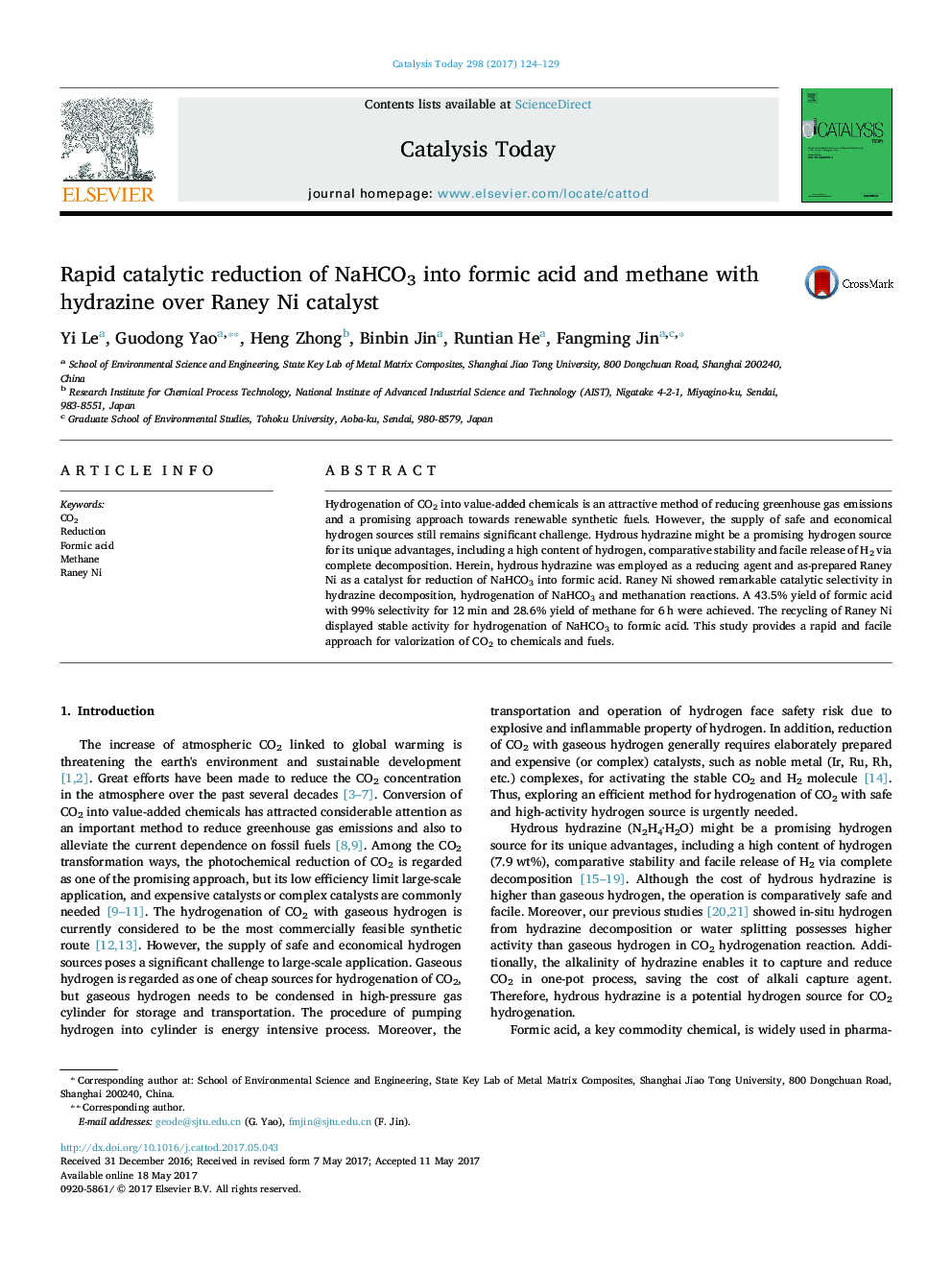| Article ID | Journal | Published Year | Pages | File Type |
|---|---|---|---|---|
| 4756770 | Catalysis Today | 2017 | 6 Pages |
â¢Hydrazine was employed as a reductant and Raney Ni as a catalyst for reduction of NaHCO3.â¢Raney Ni showed significant catalytic selectivity in hydrogenation of NaHCO3 and methanation.â¢A 43.5% yield of formic acid with 99% selectivity for 12 min was obtained.â¢A 28.6% yield of methane for 6 h was achieved.â¢As-prepared Raney Ni displayed stable catalytic activity.
Hydrogenation of CO2 into value-added chemicals is an attractive method of reducing greenhouse gas emissions and a promising approach towards renewable synthetic fuels. However, the supply of safe and economical hydrogen sources still remains significant challenge. Hydrous hydrazine might be a promising hydrogen source for its unique advantages, including a high content of hydrogen, comparative stability and facile release of H2 via complete decomposition. Herein, hydrous hydrazine was employed as a reducing agent and as-prepared Raney Ni as a catalyst for reduction of NaHCO3 into formic acid. Raney Ni showed remarkable catalytic selectivity in hydrazine decomposition, hydrogenation of NaHCO3 and methanation reactions. A 43.5% yield of formic acid with 99% selectivity for 12Â min and 28.6% yield of methane for 6Â h were achieved. The recycling of Raney Ni displayed stable activity for hydrogenation of NaHCO3 to formic acid. This study provides a rapid and facile approach for valorization of CO2 to chemicals and fuels.
Graphical abstractDownload high-res image (114KB)Download full-size image
